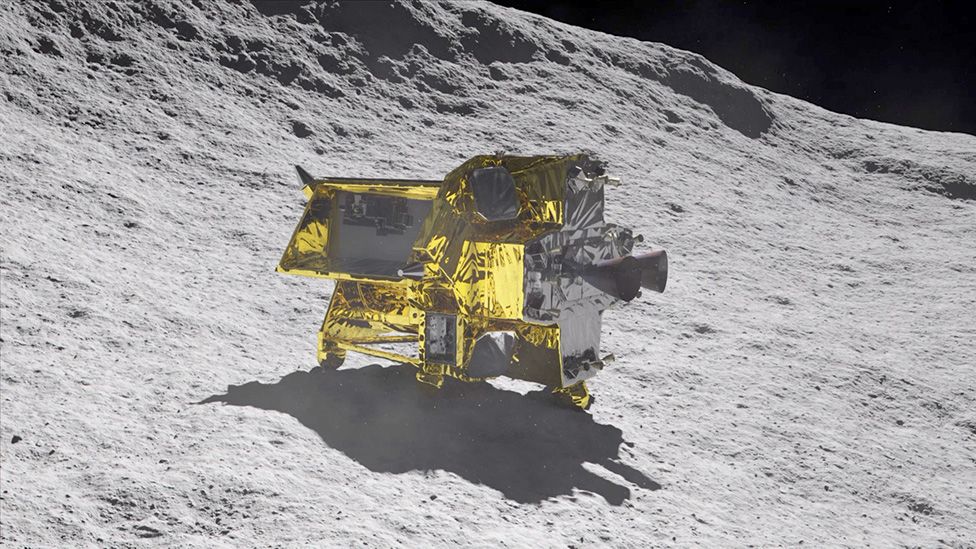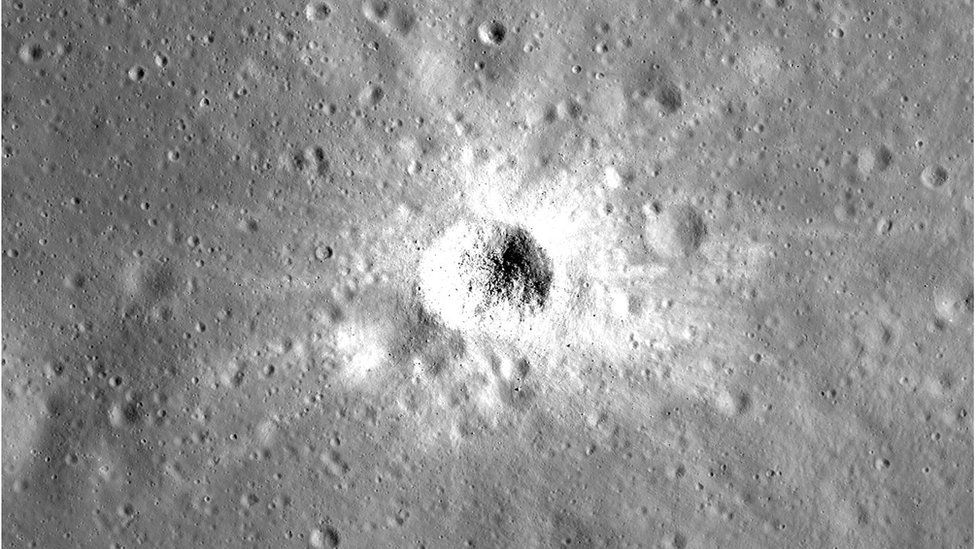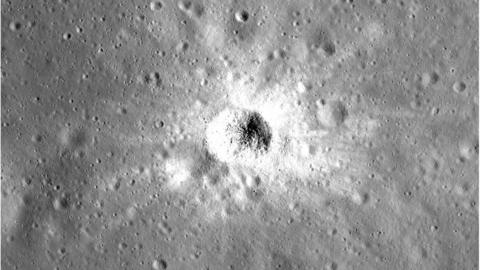
Japan may yet manage to salvage its Moon lander, the country’s space agency Jaxa says – if sunlight hits it in the right place.
The Slim spacecraft was turned off just three hours after its historic lunar touchdown on Saturday to save power.
Engineers had realised its solar cells were pointing west, away from the Sun, and could not generate electricity.
But the mission team is now hopeful the situation could improve as lighting conditions shift.
“If sunlight hits the Moon from the west in the future, we believe there’s a possibility of power generation, and we’re currently preparing for restoration,” the Jaxa statement read.
The Slim mission – also nicknamed “Moon Sniper” for its use of precision-landing technologies – made Japan only the fifth nation in history to complete a soft lunar touchdown.
But the joy of seeing the craft complete its controlled descent soon turned to worry as power levels drained away.
Rather than let the system go completely flat, the decision was taken to put the craft to sleep.
“The battery was disconnected according to our procedures with 12% power remaining, in order to avoid a situation where the restart (of the lander) would be hampered,” Jaxa said.
“As a result, the spacecraft was switched off at 02:57 (Saturday, Japan time, or 17:57 GMT, Friday).”

Before shutdown, mission control was able to successfully gather details of Slim’s predicament, as well as images and data about its descent to the lunar surface.
“We’re relieved and beginning to get excited after confirming a lot of data has been obtained,” Jaxa said.
The agency promised updates through the week.
Moon missions try to land early in the “lunar day”, when the Sun comes up over the eastern horizon. This gives a spacecraft about two “Earth weeks” of illumination before the Sun then sets in the west for two weeks of darkness.
It’s currently “morning” at Slim’s landing location on the slopes of Shioli Crater. If, as suspected, the spacecraft’s solar cells are pointing westward, then it may have to wait until the “lunar afternoon” before those cells catch enough light to start charging the battery system.
Slim was carrying two small rovers, which data indicates it managed to eject as planned just before touchdown.
The craft is also equipped with an infrared camera to study the local geology. How much it could investigate if power levels are restored is uncertain.
Statistically, it’s proven very hard to land on the Moon. Only about half of all attempts have succeeded.
Prior to Slim’s touchdown only the US, the former Soviet Union, China and India had made it to the surface intact.
A private American mission gave up its landing bid earlier this month when it suffered a propulsion fault shortly after launch from Earth. Another commercial US mission will try its luck in late February.


